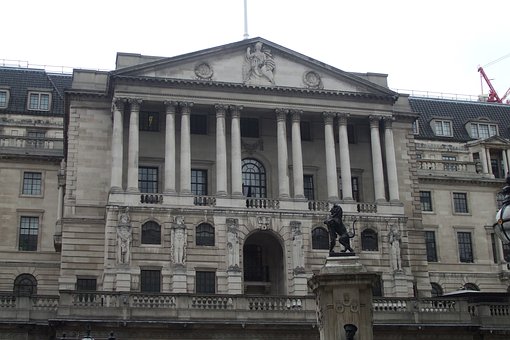The latest Zoopla House Price Index has been published, with the bulk of new pricing evidence coming from sales agreed before the lockdown.
Data on pricing for new sales agreed in the last four weeks is starting to feed through and points to a resumption in the upward pressure on house prices seen at the start of the year.
As an example, average asking prices for properties marked as sold on Zoopla, which were rising at 7% in the first three months of the year, have returned to registering a similar growth rate over the first two weeks of June.
Near-term outlook for house prices
Most of these new sales agreed are likely to complete between August and October 2020, which Zoopla expects will show sustained UK house price growth of between +2% to +3% over the next quarter, once they feed into the index.
While some have forecast annual house price falls over calendar year 2020, the portal expects any price falls in the house price indices only to crystallise in the final months of the year.
Economic impacts of COVID-19 to hit home in H2 2020
After an initial rebound, demand is expected to weaken over the summer months as the economic impact of COVID starts to materialise, with figures reported last week by the ONS indicating an acceleration in unemployment.
Caution amongst lenders and more limited availability of 90% loan to value (LTV) mortgages will reduce demand, particularly amongst first-time buyers who, over recent years, have been the engine of the housing market.
In 2019, a fifth of all homebuyers purchased a home with a deposit of 10% or less, so a decrease in the availability of 90%+ LTV mortgages could preclude this cohort of would-be buyers from entering the market, effectively reducing demand.
To find out more about how we can assist you with your Mortgage requirements, please click here to get in touch
Government and central bank support will continue to play an important role in how the economy fares with a knock-on impact for the strength of consumer sentiment.
Retail sales, for example, rebounded more than many expected in May.
While almost a fifth of mortgage holders have taken payment holidays, borrowers are able to take these up until the end of October 2020, meaning support is extended for the rest of the mortgaged sector up until April 2021.
Further support and innovation to support the economy and the housing market cannot be ruled out in these unprecedented times, which will limit the downside, albeit not completely.
Strongest sales rebound in northern cities
New sales agreed, subject to contract, have grown the most in England where the market is open for business.
The rebound in sales has been strongest in northern England, led by Leeds, Sheffield and Manchester where sales are up to 20% higher than in February 2020.
In cities where sales are not keeping pace with pre-COVID levels, including Glasgow, Newcastle and Cambridge, this is down to a lower supply of homes for sale.
Level of homes for sale (inventory) in these cities is significantly lower than last year.
While the new flow of homes for sale is back to pre-COVID levels, the number of homes for sale per estate agency branch is 15% lower than a year ago.
This is a result of the market closure at what is a busy time of year.
Stock levels in Cambridge, for example, are up to 40% lower year-on-year.
Zoopla says that the lack of supply supports their view of house price growth holding steady in the short term.
House price growth
UK house price growth is up 2.4% on the year, and has increased from 1.6% at the start of 2020.
The 20 city index registered slower growth over May, slowing to +2.1% from 2.4% in April as less pricing evidence dragged the growth rate lower.
The city with the highest rate of house price growth over the past 12 months is Nottingham (4.3%), followed by Manchester (3.9%).
Meanwhile, Oxford (-0.6%) and Aberdeen (-2%) have recorded modest price falls.
Regional momentum
Activity levels are expected to rebound in Scotland, Wales and Northern Ireland as these markets reopen and pent up demand is released.
These countries account for less than a fifth of UK housing sales but more activity will support headline measures of demand and market activity in the immediate term.
The Welsh market opened on Monday but demand for homes has been building since the English market reopened, gaining momentum over the last two weeks.
Demand for housing in Wales has now rebounded close to what has been recorded in England.
Sales agreed, however, remain 65% lower than pre-COVID levels in Wales as the physical viewing of property has not been permitted.
Zoopla expects sales volumes to increase over the rest of June and into July, mirroring the rebound in England.
Scotland’s market, which reopens later in June, has seen a similar trend with demand recently returning to pre-COVID levels, but with sales volumes lagging well behind.
Commenting on the findings Richard Donnell, Director of Research & Insight, said:
“The rebound in housing market activity has taken many in the industry by surprise.
“It is welcome news given the projections for falling economic growth and rising unemployment.
“Estate agents and developers are responding and using the upsurge in demand to rebuild their sales pipelines and open up their developments.
“We see returning pent up demand and new buyers entering the market creating upward pressure on prices in the face of a lower supply of homes for sale which has been exacerbated by the lockdown.
“House price growth is set to hold up in the near term and we expect the downward pressure on prices to come in the final months of the year as demand weakens.
“While the average asking price for homes marked as sold on Zoopla are 7% higher than a year ago this is down to an increase in sales in higher value markets where activity has remained subdued in recent years.
“We do not expect the rate of growth in the Zoopla House Price Index to reach this level, rather it is expected to hold steady at 2%.
“The Welsh housing market opened this week and levels of demand have already returned close to the levels seen in England in anticipation of the market reopening. Scotland, where the market reopens on 29 June has also seen demand rise back to pre-COVID levels but sales remain more than two thirds lower and are expected to rebound in the coming weeks.”
Source: Property Industry Eye








